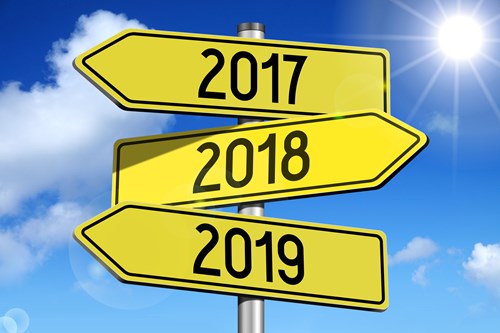Another year on
This morning, in my first class of the year, what else did we discuss but New Year’s resolutions. Despite my students only being 13 years of age, when I asked them if they made such promises, their answer was ‘we used to’. We talked about why most resolutions do not become realised.
‘A year is a long time’, mused one pupil. ‘It’s easy to forget.’
That made me cast my mind back to the post I wrote here on the MET blog 12 months ago, and all the reflections and resolutions made then. Had the positives of 2017 carried over into 2018? And had I made progress on the areas I wanted to address and the new things I wanted to try?
Last year, I highlighted three things that had gone well from the previous calendar year: my first IATEFL talk, focusing more on differentiation in my lesson plans, and exploring the place of the classroom more.

This past year has seen a definite drop in conferencing from me. I did not return to IATEFL or indeed go to any other conference, international or local. The only talk I gave in 2018 was a brief 30-minute presentation at the IATEFL YLTSIG web conference, and that was it. However, I was happy to let the year pass in the main conference free. While I enjoy the opportunities for professional development and networking that such events provide, it has been nice to take a break and engage in other non- ELT activities with the three or four extra weekends gained from not travelling or preparing a session.
I have continued to differentiate my lesson aims largely in the same way, having a minimum target for my students and further goals for them to work towards (rather than completely differentiated tasks). However, one area I have started to focus on more (following some welcomed observation feedback) is extension tasks. I have several high achieving students this year who often blast through introductory tasks several minutes ahead of their classmates. Much like with differentiation, the challenge is to give them a meaningful but not an entirely separate task to do. Bringing in personal reactions and experiences is often a good choice, allowing them to engage with the input material further while giving their classmates the extra time they need to process the task.
I have also continued to make use of classroom wall space, though perhaps not as often as before. With the primary learners in my previous job, I posted answer keys on the walls to make feedback session more interactive. Now I am predominantly working with secondary students, I use the walls to display infographs, posters and short text snippets relevant to our topic. This gives students the chance to move around while also finding extra ideas and inspiration for their in-class tasks.
In last year’s post, I also championed the power of reflection to fuel more meaningful and effective resolutions. So, did it do the trick? Well, on the surface, not really, if I’m honest. I discussed how I seemed to be using the same tech, apps, and activities in my classes again and again. I also highlighted a few creative apps that could be used to get students making greenscreen videos and/or talking avatars. Did I use them? Erm, no … I played around with them and experimented with the apps outside of lesson time but ran into problems with network connectivity (a stress test of 10 devices uploading video at the same time proved too … stressful for our network), background noise, and in-app ads. Consequently, I never got around to properly introducing them in class (though based on the trial runs that was probably just as well). In fact, the last time I used mobile devices in class just before the Christmas holidays, we used Kahoot.

However, on reflection, there is a reason why apps like Kahoot and Quizlet endure. They are designed with learning in mind and run (mostly) problem free, whilst refraining from hiding the best features behind a paywall. Other apps designed for general use and ‘creative fun’ often entice users to spend money or click on ads and may be quickly abandoned once the next cool thing comes along. The same old tech may be the same old tech but at least it’s dependable.
So, having heard my reflections, it’s once again over to you: how did your teaching continue to develop in 2018? Were you successful in working towards your CPD goals? Is there anything you would have done differently with hindsight? Please share your experiences in the comments section.

Comments
Write a Comment
Comment Submitted